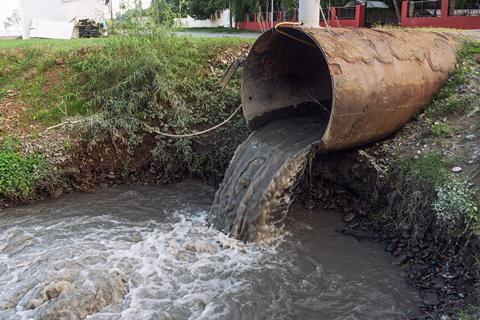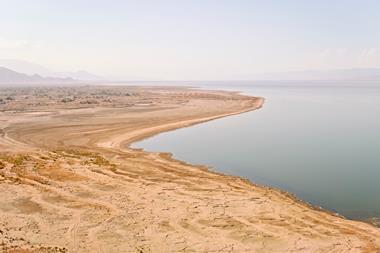
An analysis of US surface water monitoring records has found that less than 1% of chemicals of potential environmental concern have suitable monitoring data available. The researchers said the findings highlighted both the shortcomings of, and prospects for, macroscale chemical risk evaluations in the US and globally.
The ever-increasing speed with which new chemicals are entering the environment has created a significant challenge for the assessment of environmental risks. To find out how the availability of surface water monitoring data affects the interpretation of chemical risk, the researchers compiled 112 million chemical monitoring records for almost 2000 chemicals, along with 78 million environmental records collated between 1958 and 2019 from across the US. They then linked this monitoring data with established toxicity thresholds collated from regulatory sources for over 170,000 chemicals.
‘If you want to evaluate chemicals in the environment, there’s generally two things you should look at,’ explains Ralf Schulz, an environmental scientist based at the University of Kaiserslautern-Landau, in Germany, who led the study. ‘One thing is the toxicity of a chemical – at what level does it produce harm to organisms or to humans. And the second question … at what concentration does a chemical occur in the environment? And this is what we looked at in our study – we took a very, very large monitoring data set from the USA … and we asked ourselves, what can we learn from the monitoring data if we look at them at such a macro scale?’
The analysis of the data enabled them to reach three key conclusions. The first was that there is a relatively large volume of chemicals where there is toxicity information available, but no monitoring data. ‘To put that into perspective, in the US, for example, they consider roughly 300,000 chemicals as being environmentally relevant, and less than 1% of those come along with monitoring data,’ explains Schulz. ‘So, for less than 1% of these 300,000 do we have monitoring and toxicity data so that we are able to make an evaluation about their risks.’
Secondly, when they put the spatial, temporal and chemical information together they saw how well the US had done in the past monitoring chemicals and managing them, but that more recently the quantity of different chemicals present in water systems has made tracking them very challenging. ‘In the 1970s, [the US] did very well in monitoring heavy metals; they saw that heavy metals were at high levels, and they took measures to reduce the pollution, and these measures were effective,’ says Schulz. ‘But then in the 2000s and now recently, the sheer number [of chemicals] that they have to deal with has grown so much that they really do have problems to monitor all of them.’
Finally, the researchers found that detection limits were hugely important when assessing the risk posed by certain chemicals. ‘[This is] the lowest concentration at which you can measure a chemical in the environment, because they are, for some chemicals, relatively low so you can monitor all of them, but for some chemicals, and particularly some insecticides – the so-called pyrethroids, a modern group of insecticides that is used globally in agriculture – it is very often the case that the detection limits are much higher than the toxicity thresholds, and then you cannot measure the concentrations that you need to measure, and then you don’t know if there’s a risk or not.’
Unique resource
The study focused on US water pollution because of the availability of data, but Schulz says he thinks the findings are indicative of a general problem with chemical monitoring. ‘You can see that in many countries the analytical limits for some groups of chemicals are not low enough … [and] this aspect of the toxicity values and the monitoring data and to what extent they fit together, that is a general global problem,’ says Schultz. ‘With this very large dataset, we really have a very, very strong statistical and data-based evidence that these conclusions that we have made, at least for the US, are really valid.’
Schulz says that, going forward, it is key for countries to think about the groups of chemicals that are of highest importance to them and then focus monitoring on those. ‘Some areas are probably mainly contaminated by urban chemicals or industrial chemicals, others by agriculture, others by mining … [this means] you can spend your restricted amounts of money in a more effective way, and then really looking at disease chemicals with the appropriate methods that are able to detect them,’ he adds.
Chunlong Zhang, an environmental scientist at the University of Houston-Clear Lake, describes the study as ‘the first of its kind to examine in detail the adequacy of our water quality monitoring (exposure) data for the purpose of aquatic risk (effect) assessment’. While he is not surprised by the results after four decades working in this field, he is surprised that it fell to a German group to perform the analysis on US data.
‘This is unprecedented work with an exhaustive list of novel approaches adopted for data retrieval, formalisation, processing and curation,’ he notes. ‘A very unique feature of this work is its supporting database in macroscale over chemical, spatial and temporal dimensions in the US – ie, 64 million surface water monitoring records on 1900 chemicals ranging from 1958 to 2019 on 310,000 sites in the US.’
Zhang adds that instrumentation and detection limitations, as well as overlooked daughter metabolites for many organic compounds, not considered by the team, may mean that even the ’less than 1%’ figure is an underestimate.
References
S Bub et al, Science, 2025, 388,1301 (DOI: 10.1126/science.adn5356)

















1 Reader's comment